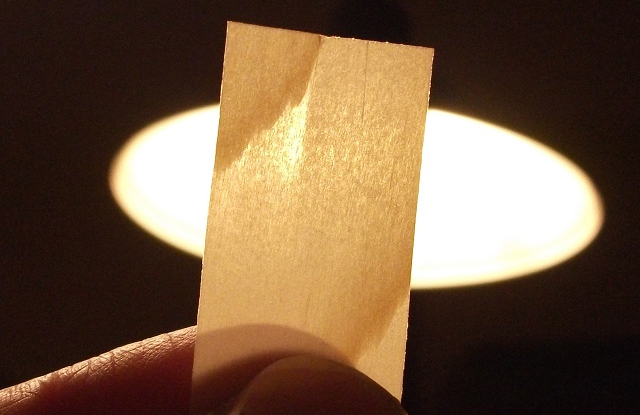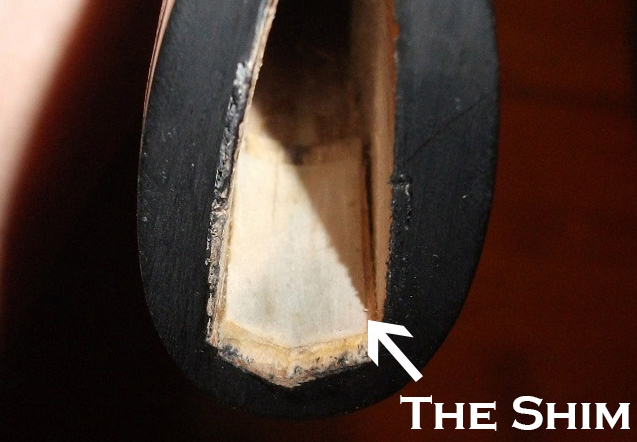How to fix loose saya?

A well-fitting saya (scabbard) is crucial for the safety and preservation of your katana. A loose saya not only feels insecure but can also lead to accidental blade exposure or damage. While a good swordsmith ensures a tight fit, repeated drawing and sheathing over time can cause the fit to loosen. This detailed guide will walk you through a reliable and traditional method for fixing a loose saya using wood veneer shims. This process is applicable to katanas, wakizashis, and tantōs, ensuring your sword remains securely housed.
Understanding the Saya’s Fit: The Habaki is Key
Before you begin, it's important to understand how a katana is meant to fit in its saya. The blade itself should never touch the inside walls of the scabbard. Instead, the only point of contact that creates the friction holding the sword in place is the habaki—the metal collar at the base of the blade—which fits snugly against the inside of the saya's mouth (koiguchi). A loose fit means the habaki is no longer making adequate contact.
The goal of this repair is to add a thin "gasket" or shim to the koiguchi to restore this friction, effectively tightening the fit around the habaki. We will be applying this shim to the ha (edge) side of the saya's opening, where the fit is typically designed to be snug.
Tools You Will Need
Wood Veneer Edging: This is the preferred material for shimming due to its thin, pliable nature and pre-applied, heat-activated adhesive. It is soft enough not to damage the blade.
Lighter or Matches: For heating the screwdriver.
Narrow-Head Screwdriver (Flathead): This tool will be used to apply heat and pressure to the veneer shim.
Scissors: A sharp pair of scissors is needed to cut the veneer strip to the correct size.
Your Katana: The sword itself is essential for testing the fit and applying final pressure.
Step-by-Step Instructions
1. Prepare Your Saya
First, carefully remove the katana from its saya and place the blade in a secure location where it will not be damaged. Examine the koiguchi. You will notice that the opening narrows from the back side (mune) to the edge side (ha). The spacer will be applied to the ha side of this opening. The shimming process only needs to be done at the mouth of the saya, as the rest of the scabbard is not designed to hold the blade in place.
2. Cut the Wood Veneer Shim
Take your wood veneer edging and use a sharp pair of scissors to cut a small strip. The length of this strip should be just long enough to fit snugly into the ha side of the koiguchi. The width should match the width of the ha side opening. A clean, precise cut is important for a seamless repair.

3. Secure the Shim in Place
Wood veneer edging has a heat-activated adhesive on its back. To activate it, you will need to apply a small amount of heat.
Heat the Screwdriver: Use a lighter, match, or candle to gently heat the tip of your narrow-head screwdriver. It only needs to be warm, similar to the heat of a clothes iron—not red-hot.
Insert and Press: Carefully insert the cut veneer shim into the ha side of the saya opening. Use the heated screwdriver to apply gentle, even pressure to the shim. The heat will activate the adhesive, bonding the veneer to the saya's inner wall. Hold the pressure for approximately 10 seconds.
Finalize the Bond: After removing the screwdriver, carefully and slowly insert your katana back into the saya. The pressure from the habaki will help the adhesive to set evenly and create the perfect, customized fit.
4. Test and Refine the Fit
Once the adhesive has fully set (this usually takes a few minutes), you can test the fit of your sword. It should feel secure, holding the sword firmly in place, but not so tight that it is difficult to draw. A slight resistance is ideal. Over time, the fit will naturally loosen a small amount as the new shim conforms to the habaki, so a slightly tight fit initially is often desirable.
Important Note: Avoid sanding or filing the inside of the saya. This can create wood dust and particles that may scratch the surface of your blade. The soft wood veneer is designed to be gentle and will not harm the blade.


Leave a Comment